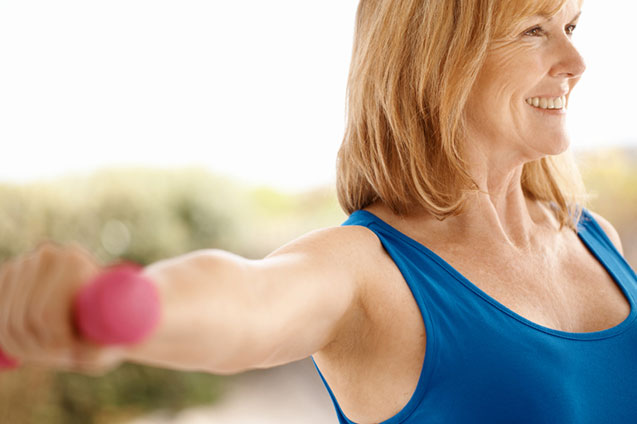PUMPING IRON TO STAY YOUNG
The difference between living independently and needing specialized care as you age can depend, in large part, on your muscle mass and strength. Doing some strength training regularly is a wise investment in your future freedom, yet only about 10 to 15 percent of those over 50 are “pumping iron.”
People lose 30% of their muscle strength between the ages of 50 and 70 years. However, in 5 months of regular training you can reverse that statistic and increase your strength by 25 to 30 percent.In addition, resistance training has been shown to help cognitive brain function in the senior years.
Here’s how and why to “go strong” into your Golden Years:
Research shows that regular strength (resistance) training increases muscle strength and reduces muscular atrophy. These improvements also help prevent falls and injuries. Perhaps not surprisingly, training intensively yields more muscle mass than training lightly. The optimum amount of exercise for healthy elderly persons is 3 to 4 training sessions per week.
“Our analyses of current research show that the most important factor in somebody’s function is their strength capacity,” says researcher Mark D. Peterson. “No matter what age an individual is, they can experience significant strength improvement with progressive resistance exercise even into the eighth and ninth decades of life.”
In an article in the American Journal of Medicine, researchers found that after an average of 18-20 weeks of progressive resistance training, an adult can add 2.42 pounds of lean muscle to their body mass and increase their overall strength by 25-30 percent.
In addition, in a study published in the Archives of Internal Medicine, researchers confirmed that, “12 months of once-weekly or twice-weekly resistance training benefited the executive cognitive function of selective attention and conflict resolution among senior women.”
A simple, easy way to start resistance training (once you’ve got permission from the doctor to do so) is to exercise using your own body weight doing squats, standing up out of a chair, modified push-ups, lying hip bridges, as well as non-traditional exercises that progress through a full range of motion, such as Thai Chi or Pilates and Yoga.
Check out some Daniel Strong Moves.
If you decide to go to the gym, make sure you begin with a personal trainer who is skilled in working with people in your age group. A good trainer will help you know how and when to increase the resistance and intensity of your routine so that you continue building muscle mass and strength without injury.
